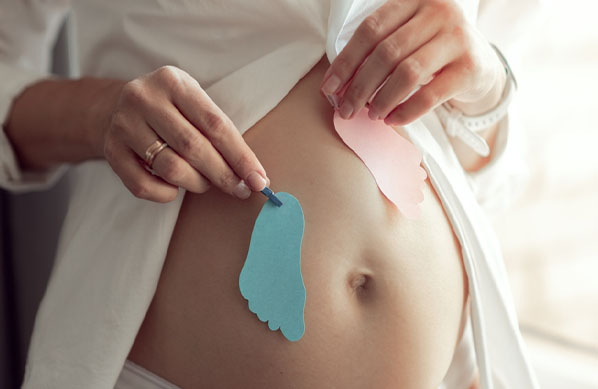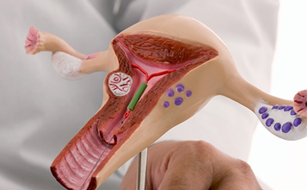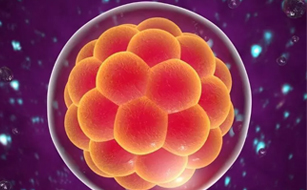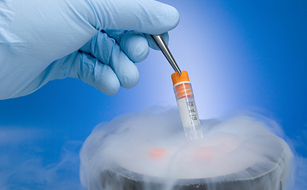
IVF stands for In Vitro Fertilization, while ET stands for Embryo Transfer. Here's an explanation of both:
In Vitro Fertilization (IVF):
IVF is a fertility treatment where fertilization occurs outside the body, in a laboratory setting. It's typically used when other methods of assisted reproductive technology have failed, or when there are specific fertility challenges such as blocked fallopian tubes, low sperm count, or endometriosis. The IVF process involves the following steps:
Ovarian Stimulation: The woman undergoes hormonal therapy to stimulate the ovaries to produce multiple eggs. This is typically done through injections of follicle-stimulating hormone (FSH) and luteinizing hormone (LH).
Monitoring: The woman's hormone levels and ovarian response are closely monitored through blood tests and ultrasound scans.
Egg Retrieval: Once the eggs reach maturity, they are retrieved from the ovaries using a minor surgical procedure called transvaginal ultrasound aspiration.
Fertilization: The retrieved eggs are then fertilized with sperm in a laboratory dish. This can be done through traditional insemination (mixing eggs and sperm together) or intracytoplasmic sperm injection (ICSI), where a single sperm is injected directly into an egg.
Embryo Culture: The fertilized eggs, now embryos, are cultured in the laboratory for a few days to allow them to develop.
Embryo Transfer: The healthiest embryos are selected for transfer into the woman's uterus. This typically occurs three to five days after egg retrieval. Any remaining viable embryos may be frozen for future use.
Pregnancy Test: About two weeks after embryo transfer, a pregnancy test is conducted to determine if the IVF cycle was successful.
Embryo Transfer (ET): Embryo transfer is a specific step within the IVF process where the developed embryos are placed into the woman's uterus. This procedure usually takes place three to five days after fertilization during an IVF cycle. The embryo transfer is performed using a thin catheter, guided by ultrasound, which is inserted through the cervix and into the uterus. The selected embryos are then gently deposited into the uterine cavity. After the embryo transfer, the woman may be advised to rest for a short period before resuming normal activities.Following the embryo transfer, the woman may undergo additional monitoring and support, and a pregnancy test is usually performed about two weeks later to determine if implantation and pregnancy have occurred.
The process of In Vitro Fertilization (IVF) and Embryo Transfer (ET) involves several steps:
Ovarian Stimulation: The woman undergoes hormonal therapy to stimulate her ovaries to produce multiple eggs. This is typically achieved through daily injections of follicle-stimulating hormone (FSH) and sometimes luteinizing hormone (LH). The goal is to retrieve multiple eggs during the egg retrieval procedure to increase the chances of successful fertilization.
Monitoring: Throughout the ovarian stimulation process, the woman's hormone levels and ovarian response are closely monitored through blood tests and ultrasound scans. This monitoring helps the fertility team adjust the dosage of hormones as needed and determine the optimal timing for the egg retrieval procedure.
Egg Retrieval: Once the eggs have reached maturity, they are retrieved from the woman's ovaries using a minor surgical procedure called transvaginal ultrasound-guided aspiration. During this procedure, a thin needle is inserted through the vaginal wall and into each ovary, and the eggs are aspirated from the follicles.
Sperm Collection and Preparation: On the same day as the egg retrieval procedure, the male partner or a sperm donor provides a semen sample. The semen is then processed in the laboratory through a process called sperm washing, which separates the sperm from the seminal fluid and concentrates the most motile and healthy sperm.
Fertilization: The retrieved eggs and prepared sperm are then combined in a laboratory dish for fertilization. This can be done through traditional insemination, where the eggs and sperm are placed together in the same dish and allowed to fertilize naturally, or through intracytoplasmic sperm injection (ICSI), where a single sperm is injected directly into each mature egg.
Embryo Culture: After fertilization, the embryos are cultured in a special incubator in the laboratory for several days. The embryos are monitored closely as they develop and grow. Typically, embryos are cultured for three to five days before they are ready for transfer.
Embryo Selection: The healthiest and most viable embryos are selected for transfer into the woman's uterus. The number of embryos transferred depends on various factors, including the woman's age, embryo quality, and previous IVF history. Any remaining viable embryos may be cryopreserved (frozen) for future use.
Embryo Transfer (ET): The selected embryos are transferred into the woman's uterus using a thin catheter. The procedure is usually performed three to five days after the egg retrieval procedure. The embryo transfer is guided by ultrasound to ensure accurate placement of the embryos into the uterine cavity.
Post-Transfer Care: After the embryo transfer, the woman may be advised to rest for a short period before resuming normal activities. Some fertility clinics may recommend additional medications or hormonal support to improve the chances of implantation. - Pregnancy Test: Approximately two weeks after the embryo transfer, a pregnancy test is performed to determine if implantation has occurred and if the IVF cycle was successful.

AIUI stands for Intrauterine Insemination. It's a fertility treatment that involves placing sperm inside a woman's uterus to facilitate fertilization.

Blastocyst transfer represents a significant advancement in the field of assisted reproductive technology, offering hope to individuals and couples struggling with infertility. By extending embryo culture to the blastocyst stage, this technique allows for improved embryo selection

Embryo freezing has transformed the landscape of fertility treatment, offering individuals and couples facing infertility a valuable option for preserving and expanding their reproductive options. By cryopreserving embryos, individuals can increase their chances of pregnancy, reduce the risk of complications

High-risk pregnancy presents unique challenges and requires specialized care to ensure the health and well-being of both mother and baby. By understanding common risk factors, recognizing potential complications, and implementing appropriate management strategies, healthcare providers can help navigate the complexities of high-risk pregnancy and optimize outcomes for expectant

